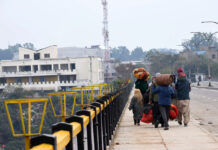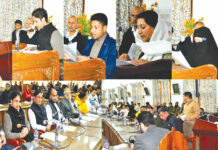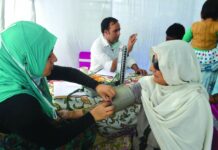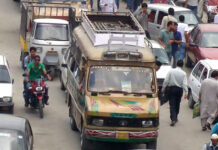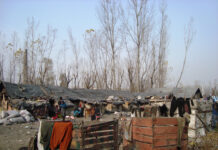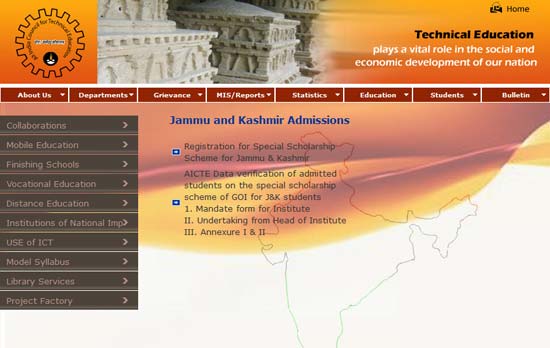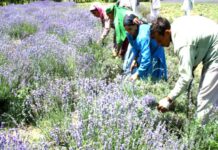Gradually Kashmir is becoming a place where all army and paramilitary wings have presence. IAF, Army, BSF, SSB, CISF, Navy and now it is the RAF. Iftikhar Gilani profiles the force three companies of which were deployed in Srinagar on state government’s request.
In May 1987, the State Provincial Armed Constabulary (PAC) of Uttar Pradesh slaughtered 42 Muslims in Hashimpura locality near Meerut city. As it followed by Ram Mandir Movement launched by Bharatiya Janata Party (BJP) and the frontal groups of Rashtriya Swayamsevak Sangh (RSS), a spate of communal riots raged the north-India. Most of places, Police not only collaborated by participated in the riots killing Muslims.
 A former senior police officer V N Rai in a study found that in a normal situation an average Hindu does not ecessarily see the police as friendly or helpful but during communal riots he looks upon the police as a helper and protector. On the other hand, Muslim riot victims do not generally feel that they would get any protection from the police, even when their lives and property are under threat. He believed that an average policeman often thinks of Muslims in very negative terms. Many policemen seem to believe the standard stereotypical images of Muslims being ‘dirty’, ‘untrustworthy’, ‘violent’ and ‘pro-Pakistani’. And this is what leads them to think of Muslims as ‘aggressors’ who initiate riots.
A former senior police officer V N Rai in a study found that in a normal situation an average Hindu does not ecessarily see the police as friendly or helpful but during communal riots he looks upon the police as a helper and protector. On the other hand, Muslim riot victims do not generally feel that they would get any protection from the police, even when their lives and property are under threat. He believed that an average policeman often thinks of Muslims in very negative terms. Many policemen seem to believe the standard stereotypical images of Muslims being ‘dirty’, ‘untrustworthy’, ‘violent’ and ‘pro-Pakistani’. And this is what leads them to think of Muslims as ‘aggressors’ who initiate riots.
With this background, the Union Home Ministry established the Rapid Action Force (RAF) on December 11, 1991, with the mission of responding to large scale communal riots and related public disorders.
This specially trained anti-riot force became fully operational in October 1992, and there are currently 10 battalions comprised of personnel from all communities. RAF is deployed to cover most of the politically volatile parts of the India.
In 1992, ten battalions were converted & reorganised into the elite Rapid Action Force (RAF), to deal with riots and were placed in communally sensitive areas. Young CRPF personnel with quick reflexes, maturity and un-biased views were selected and posted to these Bns.
Five Battalions became functional during October 1992 while the remaining five became operational in April 1994. The area of responsibility of each RAF Bn is approximately 400 Kms radious from the Bn HQr.
The special features of the RAF are that each team is independently operational and mobile. They have a distinctive uniform and have to act in zero response time. Each Coy has a woman component and additional Para-medical staff for first aid, rescue and relief. It is a special anti-riot force which could reach the place of occurrence with the quickest possible speed and deal with communal riot or riot-like situation in an absolutely objective and non-partisan manner.
There was recurrence of communal riots in Maharashtra in the first week of January 1993. To help the local police to control the situation, substantial paramilitary forces, including the newly created Rapid Action Force were made available by the Centre. Army columns also were deployed to help the Administration to control the riots and restore normality.
Its charter of deployment says prolonged deployment at any particular place to be avoided under all circumstances.
COMPOSITION OF RAF
Age group of constabulary to be between 20-27 years and junior leaders to be between 30-35 years to keep the perpetually young.
 i) Inclusion of personnel already having a few years of service with qualities of direction and drive to ensure that the personnel have the required maturity for the delicate duties required to be performed.
i) Inclusion of personnel already having a few years of service with qualities of direction and drive to ensure that the personnel have the required maturity for the delicate duties required to be performed.
ii) A composite character with fair representation of minorities and weaker sections to be maintained by re-grouping and re-shuffling the personnel from other Bns of the CRPF.
Though, communal riots in north-India have become less frequent over past two decades it had little to do with the RAF. The riots somehow stopped due to declining political fortunes of the Congress party and political assertiveness of Muslims during elections, The emergence of yadav’s in Bihar and UP drawing power from backward-Muslim alliance did gave a semblance of security to Muslims rather the presence of RAF.
V. N. Ray in his study on police role towards minorities concludes that when he points out to police officers that many more Muslims than Hindus lose their lives in the riots and so it is improbable that they could be said to have initiated them, they generally refuse to agree.
“They claim that Hindus are, by nature, ‘pious’ and ‘non-violent’, and ‘law abiding’, and would, therefore, never initiate violence themselves. This perception seems to be deeply rooted in their psyche.
My argument is that if you analyse the history of various riots that have taken place in India since 1960 or so, you will find that there has probably been no single riot in which less than 90% of those killed have been Muslims, but this point is generally not accepted by the average policeman, although I am basing my claim on official records. I am not surprised that many police officers do not wish to recognise this fact,” he says.


